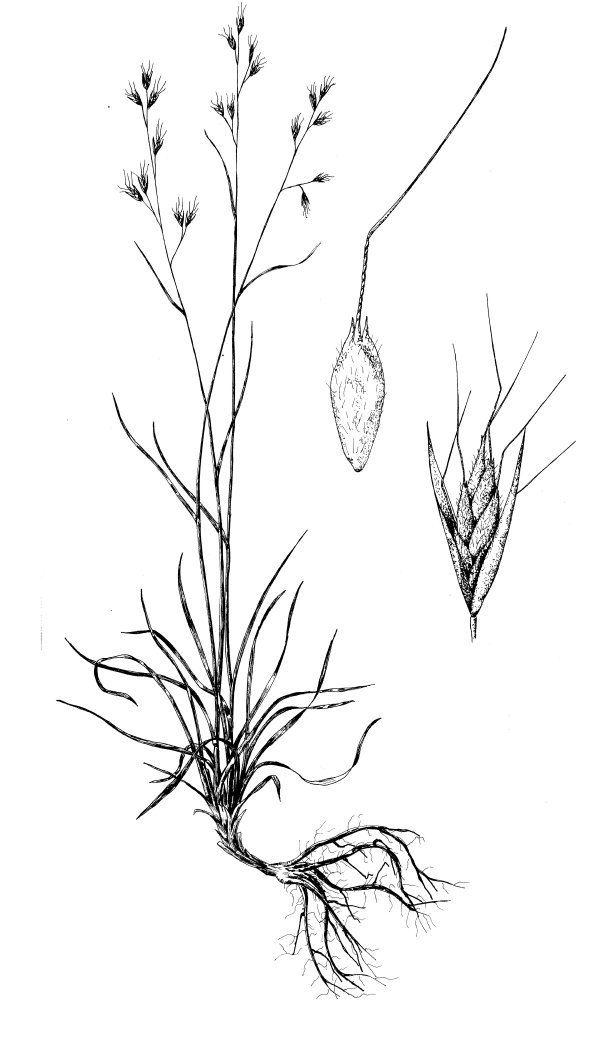
Bromus japonicus Thunb. Japanese Brome Habit: Winter annual, usually in dense colonies. Culms: Erect or spreading, rather weak, geniculate at base, 40-70 cm. tall. Blades: 7-20 cm. long, 3-7 mm. wide, usually densely pubescent, or often velvety, the gray hairs conspicuous. Sheaths: Longer or shorter than the internodes, normally densely and conspicuously pubescent, the hairs mostly reflexed. Ligule: Membranous, about 2 mm. long, erose. Inflorescence: Panicle 12-20 cm. long, diffuse, soon drooping to one side, panicle branches flexuous, of different lengths, with 1-5 spikelets at their extremities. Spikelets: 6-13 flowered, 18-20 mm. long, exclusive of the awns, about 4-5 mm. wide, linear, flattened. Glumes: Unequal, rather broad, the first acute, 3-nerved, 4-6 mm. long, the second broader, 5- or more-nerved, 6-8 mm. long, obtuse, often emarginate, both slightly scabrous towards the apex. Lemmas: Obtuse, smooth, 7-9 mm. long, 9-nerved (the marginal pair of nerves faint), broader above the base, the hyaline margin obtusely angled above the middle, the apex two-toothed, bearing a scabrous awn from about 1.5 mm. below the apex, 5-13 mm. long, somewhat twisted or bent and strongly flexuous at maturity, those of the lower florets shorter than the upper. Palea: About 1.5-2 mm. shorter than its lemma, obtuse, hispid-ciliate on its 2 keels. Fruit: Grain furrowed, adhering to the palea. Habitat: Weed in waste places, roadsides, thickets, and prairies. May-July. Kansas Range: East half, west to Sheridan county in the north. Synonyms: Bromus japonicus Thunb. ex Murr. var. porrectus Hack. Bromus patulus Mert. & Koch